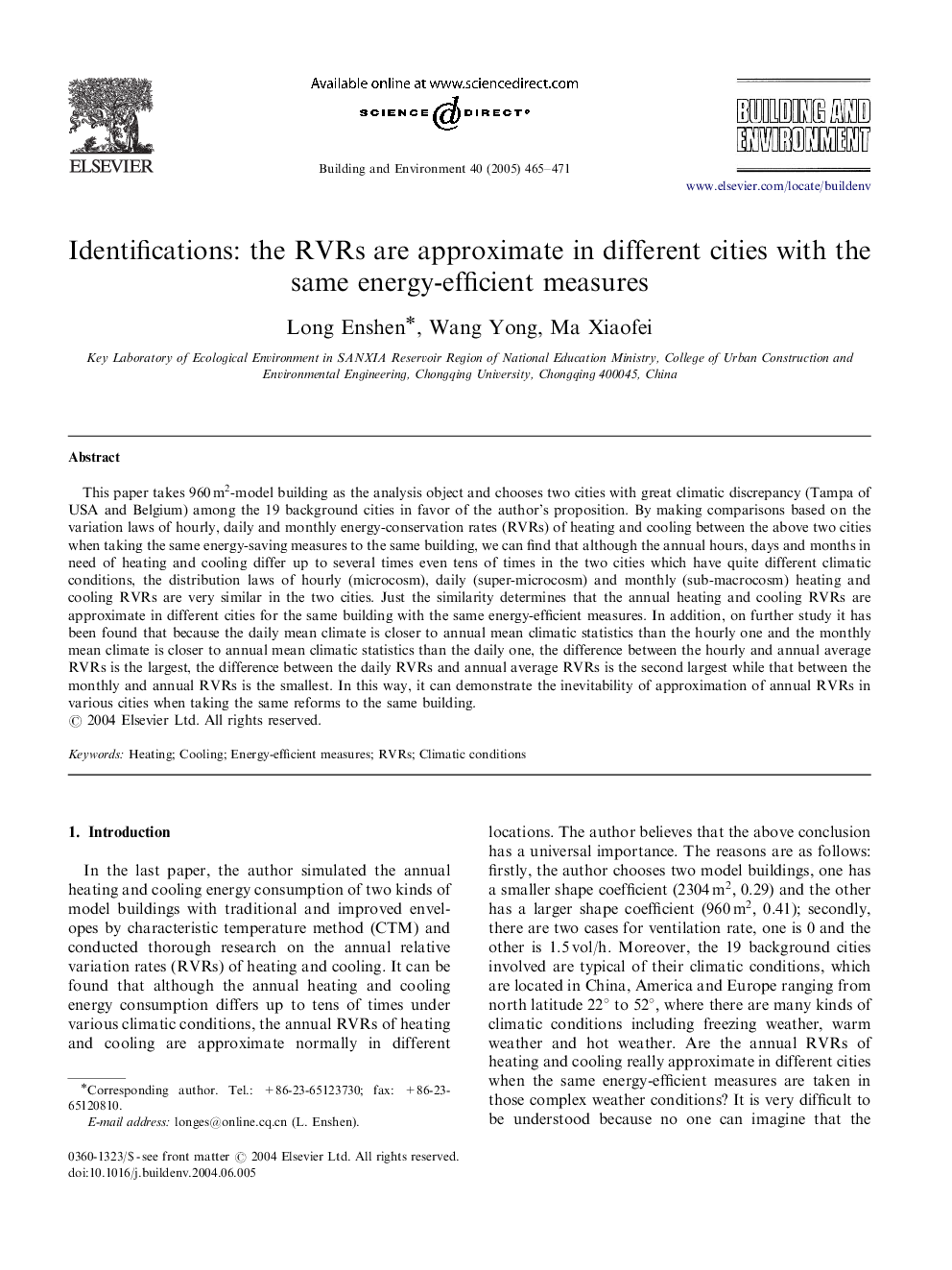| Article ID | Journal | Published Year | Pages | File Type |
|---|---|---|---|---|
| 10283193 | Building and Environment | 2005 | 7 Pages |
Abstract
This paper takes 960m2-model building as the analysis object and chooses two cities with great climatic discrepancy (Tampa of USA and Belgium) among the 19 background cities in favor of the author's proposition. By making comparisons based on the variation laws of hourly, daily and monthly energy-conservation rates (RVRs) of heating and cooling between the above two cities when taking the same energy-saving measures to the same building, we can find that although the annual hours, days and months in need of heating and cooling differ up to several times even tens of times in the two cities which have quite different climatic conditions, the distribution laws of hourly (microcosm), daily (super-microcosm) and monthly (sub-macrocosm) heating and cooling RVRs are very similar in the two cities. Just the similarity determines that the annual heating and cooling RVRs are approximate in different cities for the same building with the same energy-efficient measures. In addition, on further study it has been found that because the daily mean climate is closer to annual mean climatic statistics than the hourly one and the monthly mean climate is closer to annual mean climatic statistics than the daily one, the difference between the hourly and annual average RVRs is the largest, the difference between the daily RVRs and annual average RVRs is the second largest while that between the monthly and annual RVRs is the smallest. In this way, it can demonstrate the inevitability of approximation of annual RVRs in various cities when taking the same reforms to the same building.
Related Topics
Physical Sciences and Engineering
Energy
Renewable Energy, Sustainability and the Environment
Authors
Long Enshen, Wang Yong, Ma Xiaofei,
